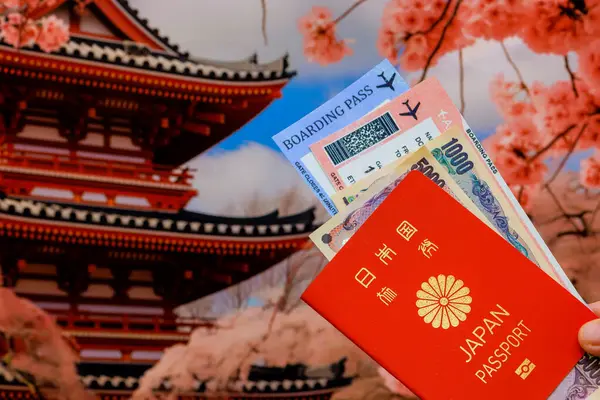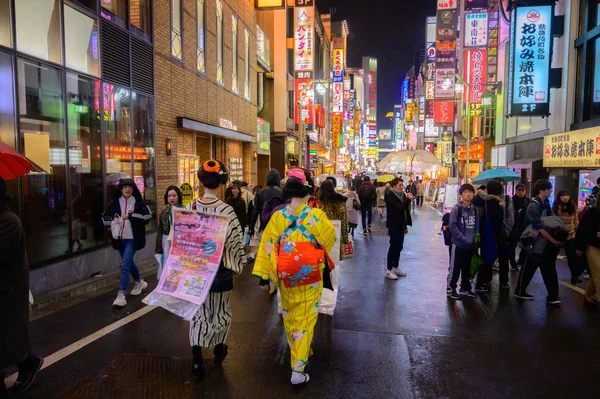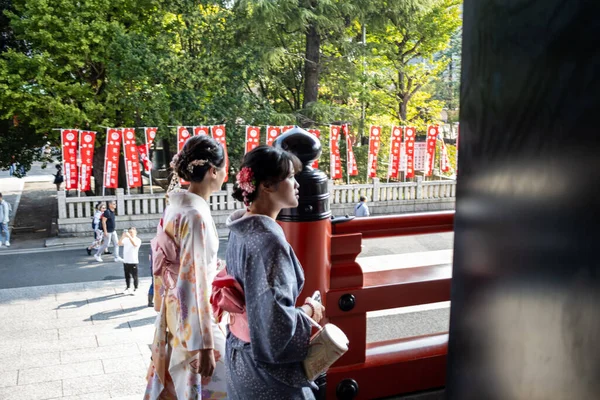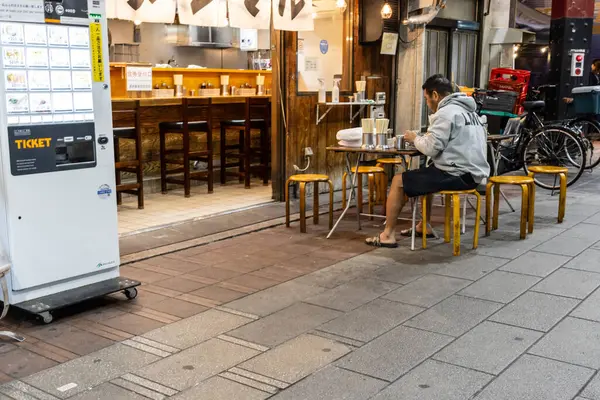Landing in Japan feels like stepping into a parallel universe where vending machines sell hot coffee, trains arrive precisely on schedule, and bowing replaces handshakes. The cultural differences run deeper than most travelers anticipate, creating opportunities for embarrassing missteps that can turn simple interactions into confusing encounters.
Understanding these common pitfalls before arrival transforms potential awkward moments into smooth cultural exchanges. Every first-time visitor falls into predictable traps that locals notice immediately but rarely mention directly. Here is a list of 17 Japanese mistakes every first-timer makes.
Tipping at Restaurants

American visitors often reach for their wallets to leave gratuity after meals, not realizing this gesture can offend restaurant staff in Japan. The concept of tipping doesn’t exist in Japanese service culture—excellent service is expected and included in the price rather than rewarded with additional money.
Attempting to tip can create uncomfortable situations where staff chase customers down the street to return the ‘forgotten’ money. The cultural belief system views exceptional service as a matter of personal and professional pride, not something requiring monetary incentive.
Wearing Shoes Indoors

The moment you step inside a Japanese home, restaurant with tatami mats, or traditional accommodation, shoes must come off—yet many visitors forget this fundamental rule and walk around in outdoor footwear. This mistake extends beyond homes to include temples, some restaurants, fitting rooms, and certain hotel areas where slippers or bare feet are expected.
The practical aspect involves keeping indoor spaces clean, but the cultural significance runs much deeper, representing respect for sacred or personal spaces. Bringing outdoor dirt inside is considered deeply disrespectful, though most Japanese people won’t directly confront foreign visitors about this transgression.
Like Travel Pug’s content? Follow us on MSN.
Eating While Walking

Western cities normalize eating on the go, but Japanese culture views consuming food while walking as remarkably rude—something most tourists discover only after receiving disapproving stares. The proper etiquette involves eating purchased food items at the location where you bought them, whether that’s standing near a convenience store or sitting in a designated eating area.
This rule applies especially strongly to traditional neighborhoods and during festivals, where eating while moving through crowds is considered particularly inappropriate. The cultural foundation emphasizes mindfulness and respect for both food and public spaces.
Talking Loudly on Trains

Subway cars in Tokyo and other Japanese cities maintain an almost library-like quiet that shocks visitors accustomed to chattering commuters in other countries. Speaking at normal conversational volume can draw stares and sighs from fellow passengers who expect trains to remain peaceful spaces for rest and contemplation.
Phone conversations are particularly frowned upon, with most Japanese people switching their devices to silent mode and avoiding calls entirely during transit. The cultural expectation prioritizes collective comfort over individual expression, creating a traveling environment that many find surprisingly relaxing once they adapt.
Blowing Your Nose in Public

Reaching for tissues and loudly clearing nasal passages in public spaces violates Japanese social norms in ways that many Western visitors don’t anticipate. The sound of nose-blowing is considered unpleasant and inappropriate for others to hear, similar to how burping or other bodily functions are kept private.
Japanese people typically excuse themselves to restrooms or private areas when dealing with nasal congestion, or they quietly sniffle until they can address the issue properly. The cultural standard maintains that personal bodily functions shouldn’t impose on others’ comfort or peace.
Like Travel Pug’s content? Follow us on MSN.
Pointing with Single Fingers

Using index fingers to point at objects, people, or directions comes across as incredibly rude in Japanese culture, though most tourists use this gesture without realizing its offensive nature. The appropriate method involves using an open hand with all fingers extended or gesturing with the entire hand rather than singling out one digit.
This extends to pointing at menu items, giving directions, or indicating objects of interest during conversations with locals. The cultural reasoning views single-finger pointing as aggressive and disrespectful, particularly when directed toward people.
Refusing Business Cards Improperly

Receiving business cards in Japan involves specific rituals that most first-time visitors handle incorrectly, creating immediate negative impressions in professional or semi-formal settings. The proper technique requires accepting cards with both hands, reading them carefully, and placing them on the table with care, face-up and visible.
Treating business cards casually or writing on them is considered equivalent to disrespecting the person who gave them to you. The cultural significance treats business cards as extensions of personal identity rather than simple contact information.
Eating Sushi Incorrectly

Most tourists approach sushi with Western dining expectations, using chopsticks for everything and adding excessive amounts of soy sauce and wasabi to each piece. Traditional sushi etiquette allows—and sometimes prefers—eating certain pieces with fingers while the chef has already seasoned each piece to perfection.
Mixing wasabi directly into soy sauce creates a paste that overwhelms the subtle flavors the chef intended, though many sushi restaurants now accommodate this Western preference. The proper approach involves trusting the chef’s expertise and eating each piece as intended rather than heavily modifying the flavors.
Like Travel Pug’s content? Follow us on MSN.
Bowing Incorrectly

Western visitors often attempt to bow as a sign of cultural respect but get the depth, duration, and context completely wrong, sometimes creating more awkwardness than if they’d simply nodded. Different situations require different bowing styles—from slight nods for casual encounters to deeper bows for formal apologies or gratitude.
The timing matters, too, with some visitors bowing repeatedly during single conversations in ways that seem excessive to Japanese observers. A simple nod or slight bow usually suffices for tourists while understanding that mastering proper bowing takes years of cultural immersion.
Ignoring Garbage Sorting Rules

Japan’s complex recycling system baffles first-time visitors who are accustomed to single-bin waste disposal, leading to improperly sorted trash that creates problems for building management and neighbors. Different types of plastic, paper, and organic waste require separation into specific categories that vary by neighborhood and building.
Many accommodations provide detailed sorting guides, but tourists often ignore these instructions or find them too complicated to follow. The cultural emphasis on environmental responsibility makes proper waste sorting a matter of community respect rather than mere convenience.
Using Chopsticks as Utensils Only

Beyond their obvious function as eating tools, chopsticks carry cultural significance that most visitors completely miss, leading to unintentionally offensive behaviors during meals. Sticking chopsticks vertically into rice resembles funeral rituals and should never be done while passing food directly from chopsticks to chopsticks mimics ceremonial practices associated with death.
Using chopsticks to point, move dishes around, or play with food appears childish and disrespectful to Japanese dining companions. The proper etiquette treats chopsticks as extensions of respectful eating rather than simple utensils.
Like Travel Pug’s content? Follow us on MSN.
Expecting English Everywhere

Many first-time visitors assume English will be widely spoken and understood, particularly in Tokyo, leading to frustration when basic communication becomes challenging outside tourist areas. While younger Japanese people often study English in school, speaking confidence remains limited, and many prefer not to attempt conversations they might handle imperfectly.
Rural areas and smaller cities have even less English availability, making translation apps or basic Japanese phrases essential for navigation and ordering food. The cultural tendency toward perfectionism means many Japanese people avoid speaking English unless they feel completely confident in their abilities.
Rushing Through Temple Visits

Tourists often treat temples and shrines like photo opportunities rather than active spiritual spaces, rushing through without understanding proper etiquette or showing appropriate reverence. The correct approach involves purification rituals at water basins, respectful behavior near prayer areas, and understanding that flash photography may be prohibited in certain spaces.
Many visitors also miss the subtle differences between Buddhist temples and Shinto shrines, each with distinct customs and appropriate behaviors. The cultural expectation emphasizes mindfulness and respect for sacred spaces rather than quick sightseeing.
Misunderstanding Public Bath Rules

Hot springs and public baths require extensive preparation and specific behaviors that most Western visitors handle incorrectly, creating uncomfortable situations for everyone involved. The essential rule involves thorough washing and rinsing while seated before entering any communal soaking area, yet many tourists skip this step or handle it inadequately.
Tattoos can also create complications, as many establishments still prohibit them due to historical associations with organized crime. The cultural significance treats public bathing as purification and relaxation rather than mere cleaning, requiring patience and proper preparation.
Like Travel Pug’s content? Follow us on MSN.
Ordering Food Incorrectly

Restaurant ordering in Japan involves customs and expectations that differ significantly from Western dining, leading to confusion and inefficient service for unprepared visitors. Many establishments use ticket machines or specific ordering procedures that tourists find confusing, while others expect customers to order everything at once rather than requesting items throughout the meal.
Sharing dishes isn’t always expected or appropriate, and some restaurants cater to individual dining rather than group-style eating. The cultural approach emphasizes efficiency and respect for both kitchen staff and other customers waiting for tables.
Misreading Social Cues

Japanese communication relies heavily on subtle non-verbal signals and indirect language that Western visitors often miss entirely, leading to misunderstandings and social awkwardness. The cultural concept of reading the atmosphere means paying attention to unspoken messages and group dynamics rather than relying solely on direct verbal communication.
Many Japanese people avoid confrontation or explicit refusal, instead using polite language that suggests discomfort or disagreement in ways that foreigners might not recognize. Understanding these subtle communication patterns takes time and observation, but recognizing their existence helps avoid unintentional social missteps.
Ignoring Seasonal Expectations

Japan’s strong seasonal awareness influences everything from clothing choices to food preferences, yet many tourists dress and behave without considering these cultural expectations. Wearing shorts and flip-flops during spring or fall can mark visitors as culturally unaware while ignoring seasonal food traditions means missing authentic culinary experiences.
The cultural calendar emphasizes harmony with natural changes, affecting everything from business schedules to social activities in ways that visitors might not anticipate. Understanding seasonal appropriateness helps tourists blend in better and shows respect for Japanese cultural values.
Like Travel Pug’s content? Follow us on MSN.
Beyond Guidebook Basics

Cultural missteps in Japan rarely result in serious consequences for tourists, but understanding these common mistakes transforms superficial visits into meaningful cultural exchanges. Japanese people generally show remarkable patience with foreign visitors while appreciating any effort to understand and respect local customs.
The key lies not in the perfect execution of every cultural rule but in demonstrating awareness and respect for different ways of living. Most importantly, these cultural differences make Japan fascinating rather than frustrating when approached with curiosity and humility.
More from Travel Pug

- 20 Best Beach Towns in the Carolinas
- 13 Destinations Where Tourists Regularly Regret Their Trip
- 20 Things You Actually Get in First Class
- 20 Small Airports With Aviation Museums
- 20 Places in the U.S. That Are Perfect for a Reset Trip
Like Travel Pug’s content? Follow us on MSN.
